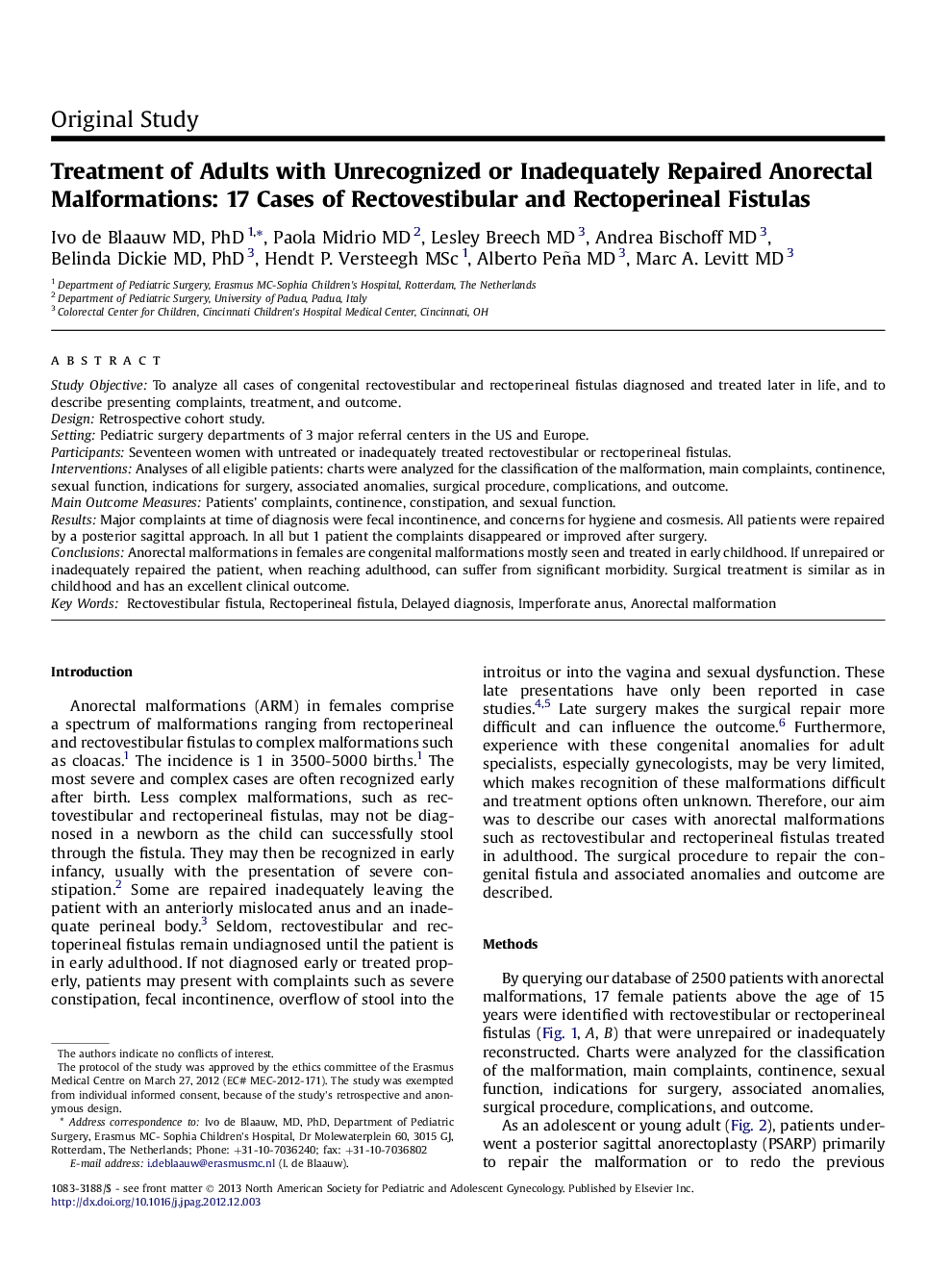| Article ID | Journal | Published Year | Pages | File Type |
|---|---|---|---|---|
| 3961757 | Journal of Pediatric and Adolescent Gynecology | 2013 | 5 Pages |
Study ObjectiveTo analyze all cases of congenital rectovestibular and rectoperineal fistulas diagnosed and treated later in life, and to describe presenting complaints, treatment, and outcome.DesignRetrospective cohort study.SettingPediatric surgery departments of 3 major referral centers in the US and Europe.ParticipantsSeventeen women with untreated or inadequately treated rectovestibular or rectoperineal fistulas.InterventionsAnalyses of all eligible patients: charts were analyzed for the classification of the malformation, main complaints, continence, sexual function, indications for surgery, associated anomalies, surgical procedure, complications, and outcome.Main Outcome MeasuresPatients' complaints, continence, constipation, and sexual function.ResultsMajor complaints at time of diagnosis were fecal incontinence, and concerns for hygiene and cosmesis. All patients were repaired by a posterior sagittal approach. In all but 1 patient the complaints disappeared or improved after surgery.ConclusionsAnorectal malformations in females are congenital malformations mostly seen and treated in early childhood. If unrepaired or inadequately repaired the patient, when reaching adulthood, can suffer from significant morbidity. Surgical treatment is similar as in childhood and has an excellent clinical outcome.
